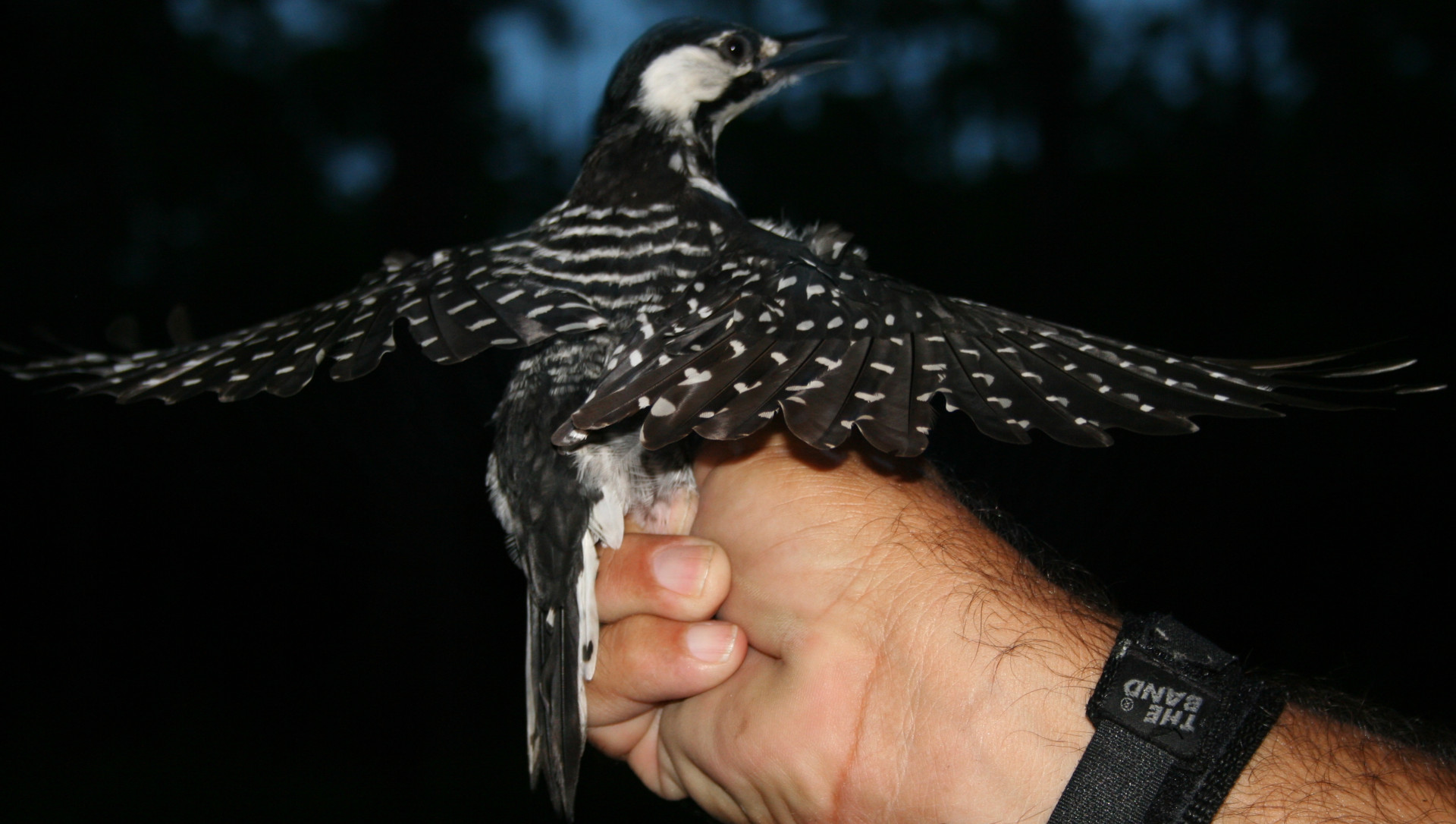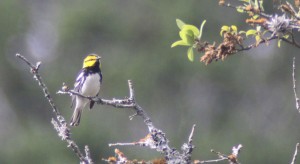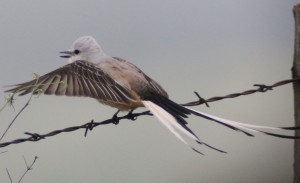The next leg of our adventure began at Fort Davis National Historic Site. We hoped that their bird feeding stations would yield a new bird for our list, but far more importantly, that the nearby HAT STORE still had the one Chuck regretted not purchasing on our last visit to the area. He got the hat, but not a new bird at the feeding station, so we set out in search of a Black-chinned Sparrow and a Montezuma Quail, both of which are secretive and somewhat hard to find. This area is at higher elevation with lovely oak grasslands which are more moist, cool and pleasant than surrounding lower elevations. We stopped several places along the road leading up to the McDonald Observatory listening for distinctive calls. On our way back down, we heard a Black-chinned calling and watched until it popped up to call again. Success! With that bird added to the list, but without finding the elusive Montezuma Quail, we headed back to the Big Bend NP in hopes of seeing the Colima Warbler.
Big Bend National Park was still in bloom and amazingly even more magnificent than when we were here a month ago. We were somewhat concerned that it was slightly early to find Colima Warblers, birds with a US range limited to the Chisos Mountains of the Big Bend National Park during breeding season. Finding one meant camping within the park in a “primitive” camping site (no electricity or showers) located almost an hour from the Pinnacles Trail, but were pleased to hear both Elf and Western Screech Owls that evening. Early the next morning we started the Pinnacles Trail hike, classed by the Park Service as “strenuous”, praying that we would see the bird without having to make the full 12 mile 5400-7800 foot elevation climb. At the end of the day, it didn’t feel like we succeeded in lessening the distance or elevation, but we actually ended up hiking only 9.5ish miles. While we did see our bird, I have to admit that it was sadly anticlimactic. We had been hearing them call as we climbed but without catching glimpses. In the ‘bird listing world’ a “heard only” bird counts as identified to add to our list, but we really strive to see them. Finally, we caught sight of a rather dull grayish-brownish bird, with white eyering, and the distinctive yellow vent. Just as Chuck got the tripod / scope /camera setup to snap a picture… a Ranger on horseback, leading 8 pack horses came up the trail, causing us to scramble to give them room without our falling off the mountain. That was the end our Colima Warbler glimpses! The day had started overcast with limited visibility, but near the top of our climb a vista opened, and Holy Cow! In Big Bend NP, we were able to add the Colima Warbler and 6 other species to our list, enjoy the desert abloom, and take a beautiful hike.
The Lost Maples State Natural Area, near San Antonio Texas, is one of a limited number of places in the United States, where the Golden-cheeked Warbler can reliably be found. The campground is clean and small. Nestled in our campsite, surrounded by birds, we enjoyed watching Eastern Bluebird nesting activity in a snag next to our picnic table. Of the parts of Texas that we have seen, these canyonlands are one of the more beautiful- dry mountaintops with moist riparian corridors below. The many cabins and resorts in the area indicate that others agree this is a wonderful place to get away from the desert heat. Our Golden-cheeked search required a 6+ mile hike up a very steep scree, which we certainly class as strenuous. Since it was drizzly, the rocks were slippery and dangerous, but the area was oh so beautiful; the maples must be breathtaking come the fall color change. Like the Colima search, we could hear the Golden-Cheeked warbler calling during much of the hike. Foliage was situated on both sides of the mountain ridge trail, making it near impossible to see the birds who were staying on the outside edges. We reached the top with little more than a peek at a Golden-cheeked. We were happy to find Black-capped Vireo, another limited range bird, but frustrated at not having decent views of a Golden-cheeked, we headed down hoping for more. We made it to the bottom of the trail without breaking an ankle, and then just 500 yards from the van, we heard the call loud and clear. Exhausted, we almost ignored it, but glanced up one last time… and there it was! So Ironic. A Golden-cheeked Warbler sitting at the top of a tree, gloriously singing it’s heart out, allowing great views and pictures, so close to the start of the trail. This was surely a much more satisfactory experience than our sight of the Colima Warbler.
To add to the successes of seeing the Colima and Golden-cheeked Warblers was the exhilaration of seeing our first Scissor-tail Flycatchers. Splendid. On our way to South Texas to catch the migrant birds beginning to gather, we were able to see dozens of groups of Scissor-tails along fence, telephone, and tree lines. While showing off for females, the males flutter up spreading their longer scissor like split tails in front of their intended mates, bringing to mind Cirque de Soleil acts


